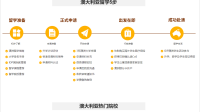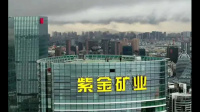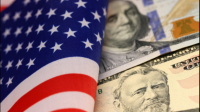美联储的困境,政府关门、汽车工人罢工、学生贷款偿还和 90 美元的油价,给当地经济造成哪些影响?
制造业回流美国,没有想象中那么容易
美媒根据《美国制造业回流指数》笃定:美国将在2025年实现超84%的美国企业部分或者全部回流其制造业务。我个人认为,大选将至,美国现任总统又拿前任总统的业绩来画饼了。

美前总统为制造业回流做了啥?
美前总统上台后,致力于重振美国制造业,他提出了一系列的政策和计划。围绕着推动制造业回流,在贸易、税收、监管等方面进行调整,希望重新将具有竞争力的产业引回美国。
他采取各种手段保护本土生产者,比如惩罚中国进口货物加征关税,谈判美墨加北美自由贸易协定,以及退出跨太平洋伙伴关系等等。此类行动助力美国的制造业变得更具吸引力,并使本土公司不再仅仅只考虑成本优势去外包生产。
他枪枪打中我们中国的痛点,比如:禁止华为购买芯片、禁止华为使用安卓系统、导致华为在市场占有率短暂位列世界第一后,急剧下降。画饼让台积电等芯片代工企业赴美建厂,让世界所有芯片代工企业都捏在美国手里。禁止先进光刻机对华出口,导致中国芯片设计发展,止步3纳米。惩罚中国高校,让中国高端制造业人才无法出国留学和正常回流。
他提出减少企业税负、疏解运营及生产过程中的各种阻碍,同时使企业更容易获得财政资金支持。这不仅让美国企业将制造业回流国内,甚至还吸引了一部分中国企业赴美建厂。他提出政府采购美国优先,这又促使一部分产品的生产在美国形成完整供应链。

所谓制造业回流有局限性
美国的所谓制造业回流其实本身就是一张大饼,有很大的行业局限性。在美国制造业中,一些高技术含量或高附加值的产业相对容易回流,如航空、汽车、芯片、计算机等行业。这些行业具有技术密集性、创新能力强以及对资本、人才、技术等方面的需求大等特点。
而在一些劳动密集型的产业,例如轻工业、纺织业等,则面临着更大的困难。这是因为劳动密集型行业的生产成本过于依赖于廉价劳动力,如果要回流,成本将显著上升,难以维持当地竞争力。此外还需要考虑到供应链、设施建设等问题,以及长途跋涉可能引入风险和延迟等问题。
选民之所以支持制造业回流,是希望能够获得工作岗位,但是美国搞的所谓制造业回流,产生的岗位其实和大多数学历水平一般的美国人没有任何关系。
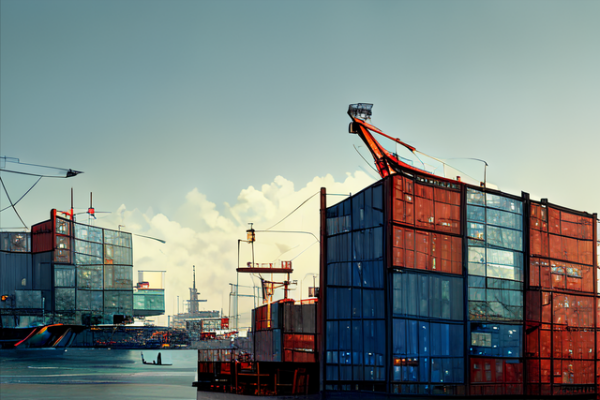
现任总统拿前总统的业绩来画饼
美国现任总统在制造业回流上几乎没做任何事,他采取的行动几乎没有任何的创见,就是躺在前任总统的业绩上。他的“1.9万亿美元的经济刺激计划”,其实就是因为出现通货紧缩,不得不向市场投放资金。因为通货紧缩,美国的就业岗位不仅没有增加,反而因为企业经营困难而有所减少。
他提议的“提高公司税率和加强打击假冒伪劣货物等措施“号称是保护本土制造业,其实就是一个口号,美国正常法制运行下,这些工作本来就要进行。但是,加税的做法,让很多赴美建设工厂的企业大呼上当。
所以,这个时候美媒说制造业回流取得成效,歌颂美现任总统的业绩,其实是前总统的。为了选票,拿前任的业绩来画饼和前任总统,继续竞争马上来临的选举,也是有点滑稽。
英文版:"Over 80% of US manufacturing will return in three years?" The achievement of the former president is now being boasted about by the current president.
According to the "US Manufacturing Reshoring Index," U.S. media is convinced that over 84% of American companies will partially or fully reshore their manufacturing operations by 2025. Personally, I think that with the presidential election approaching, the current U.S. president is boasting about the achievements of the former president again.
What did the former U.S. president do for the reshoring of manufacturing?
After taking office, the former U.S. president was committed to revitalizing American manufacturing and proposed a series of policies and plans. He made adjustments in trade, taxation, regulation and other areas aimed at promoting reshoring of manufacturing, hoping to bring competitive industries back to the United States.
He took various measures to protect domestic producers, such as imposing tariffs on Chinese imports, negotiating the USMCA free trade agreement between the United States, Mexico, and Canada, and withdrawing from the Trans-Pacific Partnership. These actions helped to make American manufacturing more attractive and led domestic companies to no longer only consider cost advantages when outsourcing production.
He hit the pain points of China, such as prohibiting Huawei from purchasing chips and using the Android system, which caused Huawei's market share to decline rapidly after briefly ranking first in the world. He invited TSMC and other chip foundries to build factories in the United States and brought all chip foundries in the world under America's control. He prevented advanced lithography machines from being exported to China, causing China's chip design to stagnate at 3 nm. He punished Chinese universities, making it difficult for top-notch talent in China's high-end manufacturing industry to study abroad and return home normally.
He proposed reducing corporate tax burdens, eliminating various obstacles in the operation and production process, and making it easier for businesses to obtain financial support. This not only allowed American companies to reshore manufacturing domestically, but also attracted some Chinese companies to build factories in the United States. He proposed government procurement with "Buy American" priority, which promoted the formation of a complete supply chain for some products in the United States.
The so-called reshoring of manufacturing has limitations.
The so-called reshoring of manufacturing in the United States is actually a big pie with significant industry limitations. In the US manufacturing sector, some industries with high technology content or high added value are comparatively easy to reshore, such as aviation, automotive, semiconductor, computer and other industries. These industries have characteristics such as technology intensity, strong innovation ability, and large demand for capital, talent, technology, etc.
However, in some labor-intensive industries, such as light industry, textiles, they face greater difficulties. This is because the production cost of labor-intensive industries is too dependent on cheap labor. If they want to reshore, the cost will significantly increase, which will be difficult to maintain local competitiveness. In addition, supply chain, facility construction and other issues need to be considered, as well as risks and delays that may be introduced by long-distance transportation.
The reason why voters support reshoring of manufacturing is to obtain job opportunities, but the jobs created through the so-called reshoring of manufacturing in the United States actually have nothing to do with most average-educated Americans.
The current president is using the achievements of the former president to boast.
The current President of the United States has done almost nothing to bring back manufacturing, and his actions have been largely uncreative, relying on the achievements of the former president. His $1.9 trillion economic stimulus plan was simply a response to deflationary pressures that required market intervention. However, due to deflation, employment in the United States not only did not increase but actually decreased due to ongoing difficulties in business operations.
His proposal to "raise corporate tax rates and strengthen measures to combat counterfeit goods" is purportedly designed to protect domestic manufacturing, but is actually just a slogan. These are works that should have been carried out under normal legal procedures in the United States. However, the practice of raising taxes has left many enterprises that intended to build factories in America feeling deceived.
Therefore, when the American media praises the effectiveness of bringing back manufacturing, they are essentially singing the praises of the achievements of the former president, not the current one. Claiming credit for the achievements of the previous administration in order to win votes and compete in the upcoming election is somewhat ridiculous.
近代美国的五次危机及措施
近代美国的五次危机,包括1929—1933年美国经济“大萧条”、 1973—1975年石油危机、 1987年美国股灾、本世纪初的互联网“泡沫”、2007年开始的次贷危机。面对危机,美国政府均采取了一系列措施挽救经济、挽救国家。 (一)1929—1933年美国经济“大萧条” 美国经济“大萧条”起始于1929年10月24日的股市突然崩盘,10月29日被抛售的股票就达1638万股,当月美国股市市值便有260亿美元化为乌有,损失比“二战”协约国所欠美国的战债还多5倍。3年间,美国股市暴跌85%,失业率高企,平均为18.8%。期间,美国GDP呈下降趋势,从1929年的3147亿美元下降到1934年的232008金融危机的评析
一、2008年全球金融危机形势简析 ⑴这次全球金融危机的产生主要由于美国的房地产泡沫及金融衍生工具的杠杆造成的,其原因如下: 1、 美联储长期的低利率政策,造成固定资产投资的泡沫及经济的虚假繁荣; 2、 美国衍生工具和信用评级的金融监管不力,致使类似网络泡沫的经济重现,使世界各国深受其累; 3、 美国对次贷危机的危害性估计不足,没能在早期及时纠正和提供必要的***支持,造成现在难以收拾的局面; ⑵美国金融危机的后果: 1、 造成美国及全球实体经济的衰退,很多貌似强大的国家一夜之间就达到了濒临破产的边缘; 2、 此次金融危机的影响深度和广度都较1929年-1933年的经济危机要大,因为现在的全球1929年经济危机爆发的原因
爆发原因如下:
1、具体原因
生产(供给)和销售(需求)的矛盾。
(1)贫富差距过大:资本家盲目扩大生产,人民相对贫困,购买力低于生产能力。
(2)信贷消费过度膨胀,造成市场的虚假繁荣,加剧生产与销售的矛盾。
(3)股票投机过度,股票无法反映经济运行的实际情况,造成经济虚假繁荣,掩盖了矛盾。
(4)自由放任经济思想的影响,使整个社会生产处于无政府状态。
2、根本原因
生产的社会化与生产资料私有制之间的矛盾,即资本主义社会的基本矛盾。
3、直接原因
股票投机活动猖獗,掩盖了生产和销售的矛盾。
4、政策原因
各国国内政策失误,即经济危机是自由放任政策的产物。
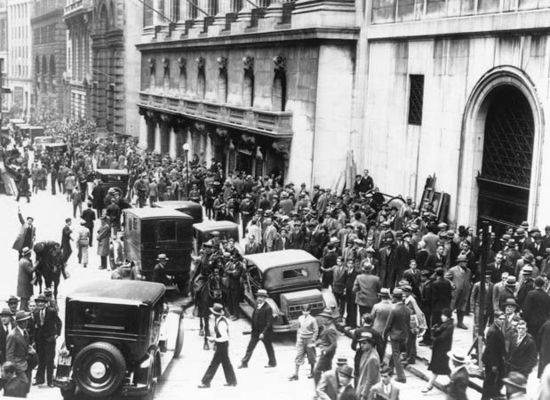
扩展资料:
1、经济危机的背景:
第一次世界大战后,战胜国召开了巴黎和会和华盛顿会议,建立了凡尔赛—华盛顿体系,暂时调整了帝国主义国家之间的关系,20世纪20年代资本主义世界处于的相对稳定时期,进入飞速发展的黄金十年。
2、经济危机造成的影响
(1)经济上的调整恶化国际关系:主要资本主义国家为了摆脱困境,纷纷提高关税,实行货币贬值等。这些做法导致世界经济进一步陷入混乱,国际关系也日趋恶化。
(2)引发政治危机:空前严重的经济危机旷日持久,法西斯主义在一些国家开始泛滥,资本主义面临着严重的政治危机,资产阶级民主制度摇摇欲坠。
参考资料来源:百度百科-世界经济大危机



